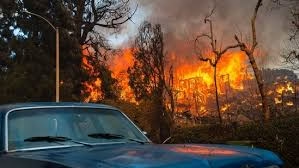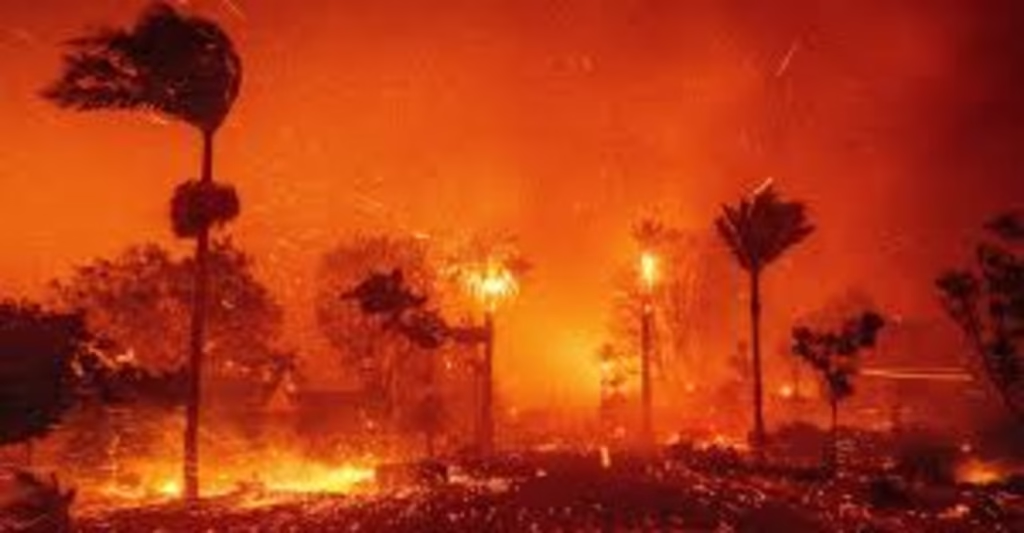Los Angeles- Fire officials are currently examining the origins of several wildfires that are ravaging homes and necessitating the evacuation of thousands in various regions of Southern California as of Wednesday.
The Palisades Fire ignited around 10:30 a.m. on Tuesday, burning nearly 3,000 acres between the coastal communities of Santa Monica and Malibu. Subsequently, at approximately 6:30 p.m., the Eaton Fire erupted in Altadena, close to Pasadena, expanding to over 2,200 acres. Later, at around 10:30 p.m., a smaller fire known as the Hurst Fire ignited in Sylmar, located in the San Fernando Valley northwest of downtown Los Angeles, consuming roughly 500 acres.
Cal Fire has stated that the causes of all three fires remain under investigation. However, the intense Santa Ana winds are likely contributing to their swift expansion.
The interplay of low humidity, dry vegetation, and variable winds has increased the risk of spot fires and swift spread, according to an update from Cal Fire.
What are the origins of wildfires? An overview of both natural and human-induced causes of wildfires.
Prior to the onset of the fires, the National Weather Service had declared its most severe warning for extreme fire conditions across a significant portion of Los Angeles County. The Los Angeles weather service office cautioned on Monday that wind gusts might attain speeds of up to 100 mph in certain regions this week, leading to “extreme fire behavior” in areas where fires may ignite.
Los Angeles region- Weather service office

The weather service office in Los Angeles issued a warning on Monday, stating, “This is an exceptionally perilous situation; in essence, the fire weather conditions are at their most severe.” They advised individuals to remain vigilant regarding their environment and to prepare for potential evacuation, particularly if situated in areas with a high risk of fire. Caution was also urged concerning any sources of ignition.
Wildfires can be triggered by both natural and human-induced factors, resulting in uncontrolled fires that spread across open land covered with vegetation.
Lightning serves as the predominant natural trigger for wildfires. In elevated regions, it can occasionally strike arid vegetation, igniting a blaze that may rapidly escalate beyond control, especially when driven by dry winds.
In urban areas adjacent to wildlife, particularly in Southern California, it is quite frequent for vehicles to inadvertently start a fire, as noted by Luca Carmignani, a Fire Advisor from the University of California Agriculture and Natural Resources, in a previous statement to USA TODAY.
You may also like
Latest jobs & career opportunities in emerging technologies



